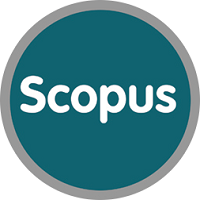Parasite spread at the domestic animal - wildlife interface: anthropogenic habitat use, phylogeny and body mass drive risk of cat and dog flea (Ctenocephalides spp.) infestation in wild mammals
Clark, Nicholas J., Seddon, Jennifer M., Šlapeta, Jan, and Wells, Konstans (2018) Parasite spread at the domestic animal - wildlife interface: anthropogenic habitat use, phylogeny and body mass drive risk of cat and dog flea (Ctenocephalides spp.) infestation in wild mammals. Parasites & Vectors, 11. 8.
|
PDF (Published Version)
- Published Version
Available under License Creative Commons Attribution. Download (3MB) | Preview |
Abstract
Background: Spillover of parasites at the domestic animal - wildlife interface is a pervasive threat to animal health. Cat and dog fleas (Ctenocephalides felis and C. canis) are among the world’s most invasive and economically important ectoparasites. Although both species are presumed to infest a diversity of host species across the globe, knowledge on their distributions in wildlife is poor. We built a global dataset of wild mammal host associations for cat and dog fleas, and used Bayesian hierarchical models to identify traits that predict wildlife infestation probability. We complemented this by calculating functional-phylogenetic host specificity to assess whether fleas are restricted to hosts with similar evolutionary histories, diet or habitat niches.
Results: Over 130 wildlife species have been found to harbour cat fleas, representing nearly 20% of all mammal species sampled for fleas. Phylogenetic models indicate cat fleas are capable of infesting a broad diversity of wild mammal species through ecological fitting. Those that use anthropogenic habitats are at highest risk. Dog fleas, by contrast, have been recorded in 31 mammal species that are primarily restricted to certain phylogenetic clades, including canids, felids and murids. Both flea species are commonly reported infesting mammals that are feral (free-roaming cats and dogs) or introduced (red foxes, black rats and brown rats), suggesting the breakdown of barriers between wildlife and invasive reservoir species will increase spillover at the domestic animal - wildlife interface.
Conclusions: Our empirical evidence shows that cat fleas are incredibly host-generalist, likely exhibiting a host range that is among the broadest of all ectoparasites. Reducing wild species’ contact rates with domestic animals across natural and anthropogenic habitats, together with mitigating impacts of invasive reservoir hosts, will be crucial for reducing invasive flea infestations in wild mammals.
| Item ID: | 78727 |
|---|---|
| Item Type: | Article (Research - C1) |
| ISSN: | 1756-3305 |
| Keywords: | Ctenocephalides canis, Ctenocephalides felis, Domestic animal - wildlife interface, Ecological fitting, Host specificity, Invasive species, Reservoir host, Spillover |
| Copyright Information: | © The Author(s). 2018 Open Access This article is distributed under the terms of the Creative Commons Attribution 4.0 International License (http://creativecommons.org/licenses/by/4.0/), which permits unrestricted use, distribution, and reproduction in any medium, provided you give appropriate credit to the original author(s) and the source, provide a link to the Creative Commons license, and indicate if changes were made. The Creative Commons Public Domain Dedication waiver (http://creativecommons.org/publicdomain/zero/1.0/) applies to the data made available in this article, unless otherwise stated. |
| Date Deposited: | 25 Mar 2025 00:11 |
| FoR Codes: | 30 AGRICULTURAL, VETERINARY AND FOOD SCIENCES > 3009 Veterinary sciences > 300909 Veterinary parasitology @ 100% |
| SEO Codes: | 28 EXPANDING KNOWLEDGE > 2801 Expanding knowledge > 280102 Expanding knowledge in the biological sciences @ 30% 18 ENVIRONMENTAL MANAGEMENT > 1806 Terrestrial systems and management > 180602 Control of pests, diseases and exotic species in terrestrial environments @ 70% |
| Downloads: |
Total: 10 Last 12 Months: 10 |
| More Statistics |



